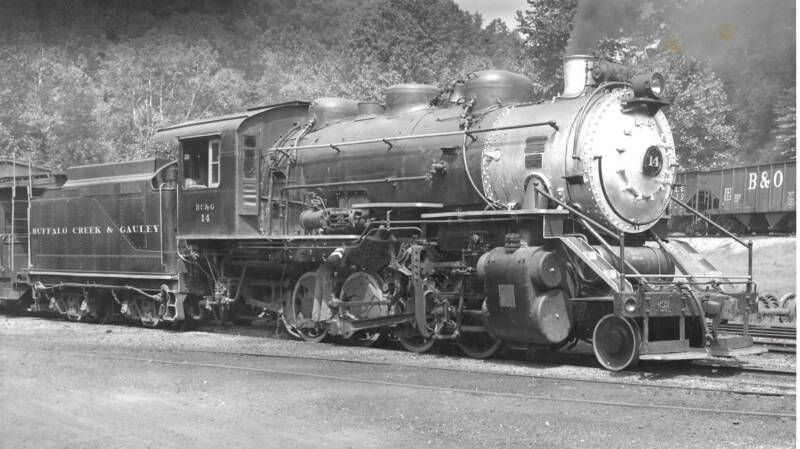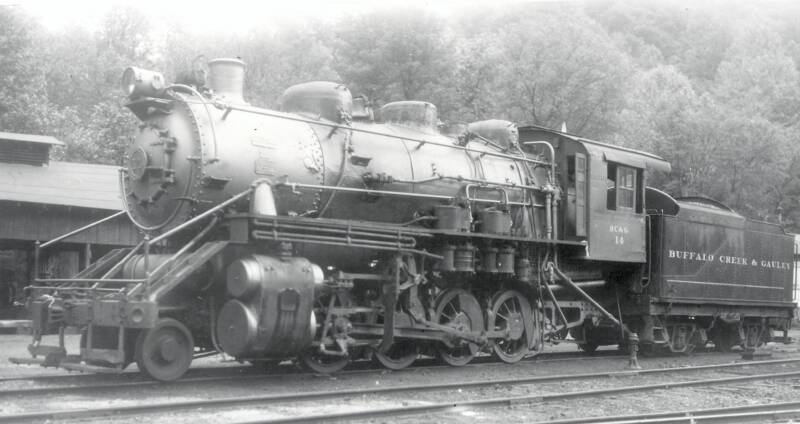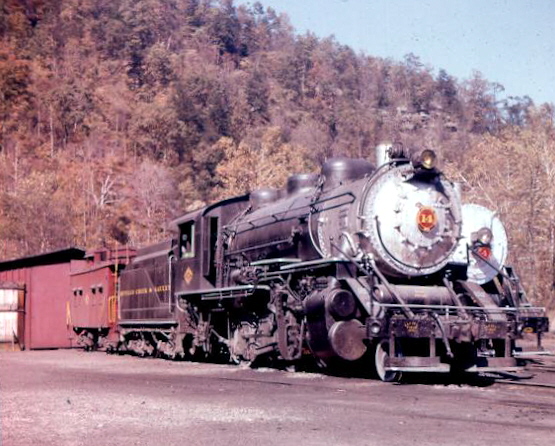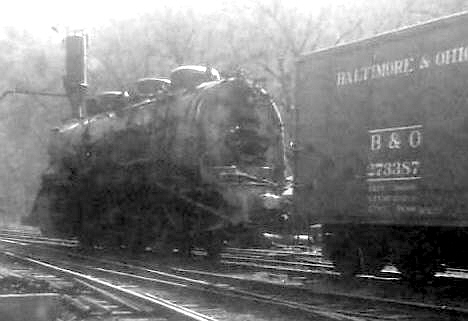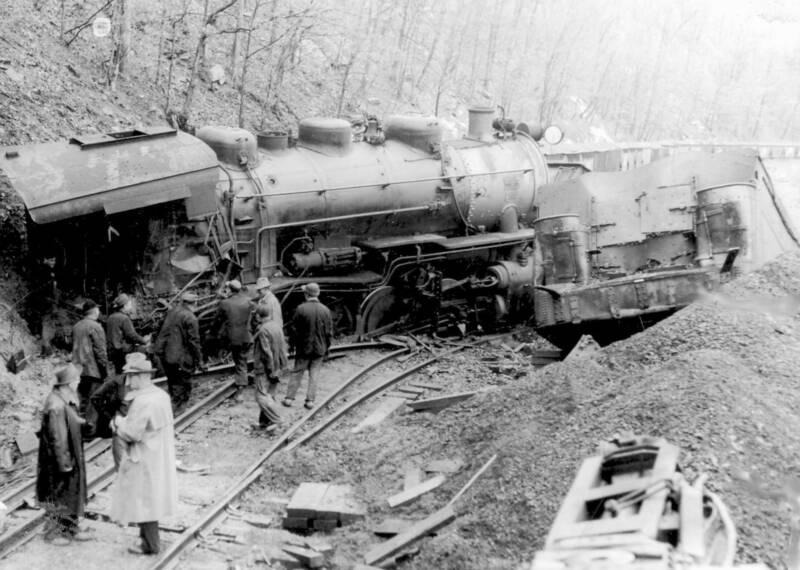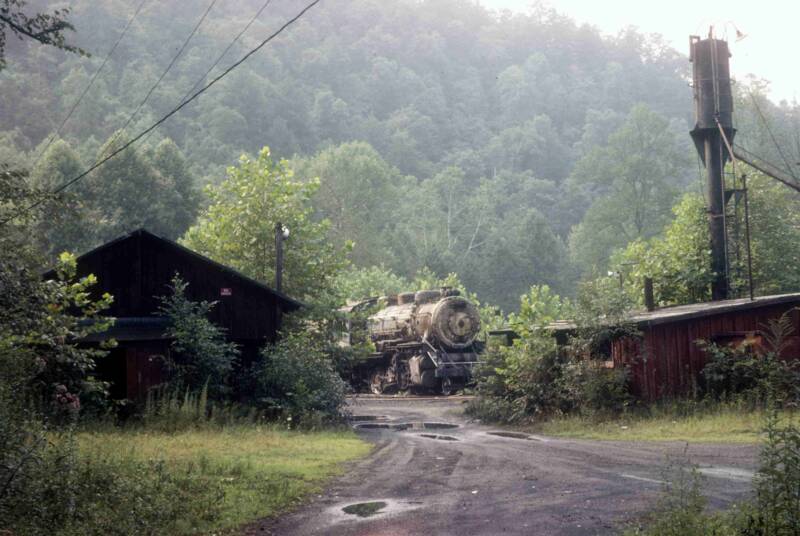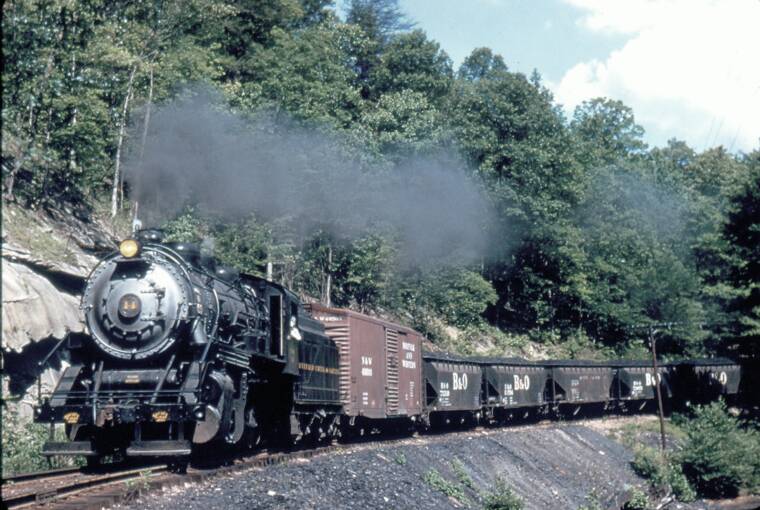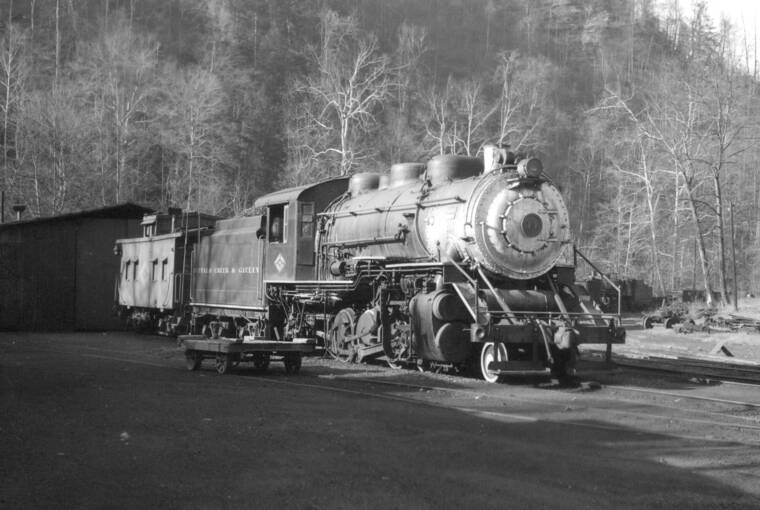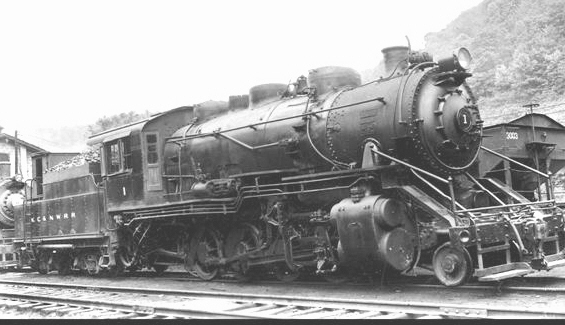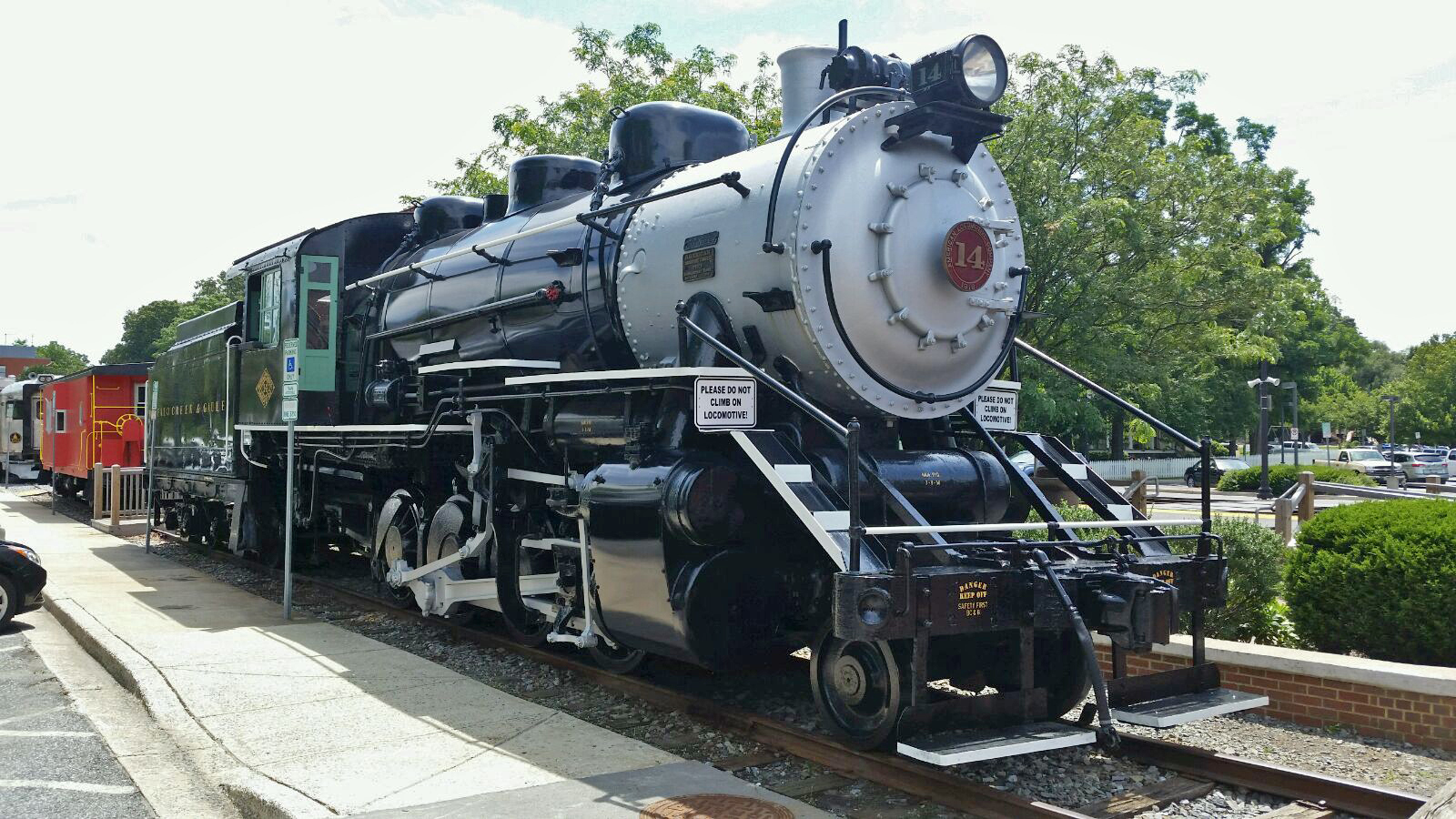Disposition
BC&G Consolidation #14
Howard Volrath photo - September 56
Howard Ameling - October 1962
Photographer unknown - September 1956
BC&G Consolidation #14 was acquired from the Kelly's Creek & Northwestern in 1950. It is an interesting engine in that it started life as an 0-8-0 switcher having been built by Alco-Schenectady in 1918 as c/n 59309 where she served as a mill switcher. ALCO did the conversion to a 2-8-0 just before the engine was sold to the KR&NW, date unknown.
This is one of the few good color photos I have seen of #14. Doesn't the number plate on the boiler front look great?
Howard Ameling photo - October 1962
These two black and white photos show the details on both sides of #14. Notice that because she started life as an 0-8-0 switcher she is fitted with two sand domes. The small size of the drivers is obvious. The "add-on" pilot is quite noticable in the photo above. The hand rails do not have the same visual character as the rest of the locomotive. Particularly noticeable is that the railing is not parallel to the steps.
Note the differences in the tender coal bunker between the two photos.
Boiler Pressure:
Driver Diamter:
Cylinders:
Tractive Effort:
The GREAT WRECK of '56
Photographer and date unknown
The part about starting life as a 0-8-0 switcher is only one of the things that makes #14 unique among the BC&G Consolidations. She was also the engine most badly damaged in the infamous wreck of September 1956! As Bobby Caruthers tells the story, on this particular day in September of 1956 there were enough empty hoppers to be taken to Widen that a double header was employed on the east bound trip. It was decided that two trains would return to Dundon with loads. When the first train got back to Dundon it stopped on the BC&G main to prepare for making the setouts on the B&O. There were no marker lights on the end of the train and the crew did not place lanterns or flares to mark their location.
Bobby Caruthers was firing on #14, the engine on the second train. As they rounded a curve approaching Dundon the rear of the first train suddenly came into view...with no space to stop! The crew of #14, including Bobby, jumped before the collision. Bobby went off the gang way and the engineer jumped out the cab window! Miraculously, no one was seriously injured. Cody Burdette says that #14 broke so many stay bolts that its amazing that the boiler didn't explode. She was in the shop a very long time before going back into service.
Bobby recalls that after the accident it became policy that all trains use rear markers.
I have spent a fair amount of time studying the photo on the left above and I'm not sure how to "but the pieces together". The best I can figure is that the train that got rammed is in the background and that it had no coach (caboose) as there is no wreckage visible between the engine and the hoppers. I assume that the tender flipped around as it appears the photo was taken before anything had been moved. What's not clear is where are the hoppers that #14 was pulling?
The photo on the right shows the damaged engine sitting in the Dundon yard awaiting repairs.
An interesting note...the Voltrath photo at the top of the page was taken in September 1956, so it must have been taken just a short while before the accident.

David Marquis - circa 1968
"GHOSTS at DUNDON"
David Marquis took this wonderful photo of #14 abandon at the Dundon shops around 1968. He titled the photo "Ghosts at Dundon". The photo certainly captures the dispair that characterized the abandoned railroad. While I certainly don't like what's protrayed, I think this is a wonderful photo.
Sam Powell photo - July 2014
While #14 was in very sorry shape in the late 1960's sitting in Dundon, she survived and is currently on static display in Gaithersburg, MD. It is wonderful from a BC&G fan's perspective that the engine is displayed in her proper BC&G livery. In fact everything about the paint scheme from the green window frames, the red roof, silver smoke box, white trim on the running boards and white driver tires is correct. Only the silver siderods are an embellishment. Compare this photo with the Ameling color photo at the top of this page.
While BC&G #4 currently at the North Carolina Transportation Museum is scheduled to be painted in her BC&G livery when the restoration is complete, as of this writing, #14 is the only BC&G engine currently correctly painted!
Cody Burdette has indicated that #14 could handle 70 - 75 cars while #4 and #13 were rated at 60 - 65 cars making her the "workhorse" of the 3 Consolidations.
This photo shows #14 while still in service on the Kelly's Creek & Northwestern as their #4. She's already been converted to a 2-8-0 but doesn't yet have the BC&G pilot mounted air tank.
This photo of #14 was taken in November of 1963, just weeks before the Rich Run Mine closed. Notice that the diamond logo has now been added to the side of the cab.
This is one of my favorite photos of #14 out doing what she did best...hauling loads of mostly B&O hoppers from the mine. This undated photo is from a collection of slides sold by Al Chione. Photographer and date unknown.
